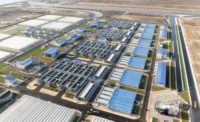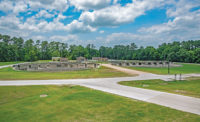

Since Panama City was founded in the 1500s by Spanish conquistadors, sewage has been dumped in the local rivers and the Bay of Panama. To address this health and environmental hazard, the Panamanian government broke ground on the Panama City Wastewater Treatment Plant project in 2009.
The 2.2-cu-meter-per-day wastewater treatment plant is the largest biological nutrient removal (BNR) plant of its kind in Central America. Completed in May 2013, the $241-million project was built to receive and treat sewage from Panama City's metropolitan area, where the population exceeds one million people.
One of the biggest challenges faced by the design team, led by Degremont S.A.S. of Bilbao, Spain, was the location of the plant on the outskirts of Panama City in a swampy area that cannot support traditional structures. The solution was to borrow fill from above the design elevation and, to promote accelerated settlement of this landfill, the use of wick drains. Precast piles were driven to support most of the process building. The piping is supported with multiple layers of triaxial geogrids within gravel bases. Flexible couplings were used at interconnections.
Other project innovations include generating biogas from sludge digestion to produce 18% of the plant's energy needs as well as the total energy required for heating and maintaining the temperature of the digesters.Project Team
Owner: Panama Ministry of Health
Lead Designer: Degremont S.A.S., Bilbao, Spain
General Contractor: Construtora Norberto Odebrecht S.A., Brazil, and Degremont S.A.S., a joint venture
Structural-Civil Engineer: Hidrosan, S.A., Chile
MEP Engineer: Degremont S.A.S., Bi:lboa









